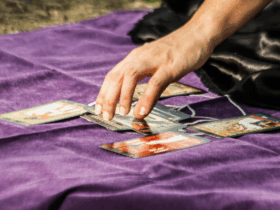Have you ever noticed that your closest friendships seem to follow a pattern? While personality, shared experiences, and emotional connection are obvious factors, numbers also play a hidden role in determining who becomes part of your inner circle. From cognitive limits to frequency of interaction, numerical patterns influence how we form and maintain friendships, often without us even realizing it.
Dunbar’s Number: The Natural Limit of Friendships
Anthropologist Robin Dunbar proposed that the human brain can maintain meaningful relationships with about 150 people at a time. This is known as Dunbar’s Number, and it explains why we can only manage a limited number of close friendships despite meeting thousands of people in our lifetime. Within this broad social network, our inner circle—the people we truly confide in and rely on—usually consists of just three to five individuals. This is because deep friendships require emotional investment, and our cognitive and emotional resources are finite.
The Role of Similarity and Life Stages
Numbers also influence friendships through shared life stages and milestones. People are more likely to form strong bonds with those of similar ages or those who experience major life events—such as starting college, getting married, or becoming parents—at the same time. Research even suggests that individuals are more likely to have friends who share the same birth month, a phenomenon known as the birthday clustering effect. This is because people tend to meet and connect with others in environments shaped by their age and circumstances.

Communication Frequency and Friendship Strength
Another hidden numerical factor in friendships is the frequency of interaction. Studies show that people are more likely to maintain close friendships if they communicate at least once every few days. Friendships that drop below a certain level of interaction often weaken over time. Even digital communication plays a role—consistent messaging and social media engagement can help maintain friendships even when distance is a factor.
Friendship and the Rule of Three
Psychologists have observed that groups of three are often the most stable in friendships. Whether it’s childhood best friends, work colleagues, or close-knit social circles, trios create a dynamic where balance is maintained. This pattern extends to broader social structures as well—many cultures emphasize the significance of three in relationships, from storytelling (beginning, middle, and end) to decision-making groups (executive committees, advisory boards).
Related: How Intuition Enhances the Power of Numerology Readings
While we often think of friendships as forming naturally, numbers subtly guide the way we choose and maintain relationships. From the limits of Dunbar’s Number to communication patterns and shared milestones, numerical influences shape who we keep close. Understanding these hidden patterns can provide valuable insights into our social lives and help us nurture the friendships that matter most.





















